Meredith Allard's Blog, page 10
October 10, 2022
My Favorite Vampire Novels (and Vampires)
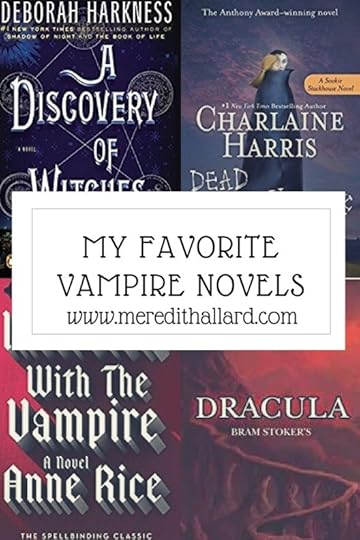
As we head into my favorite time of year, I always have a lot of fun putting out the autumn decorations. Apples, pumpkins, and multi-colored leaves always help my home feel festive. To celebrate Halloween, Down Salem Way, a novel of the Salem Witch Trials and the stand-alone prequel to the Loving Husband Trilogy, is on sale for 99 cents through the month of October at all major online retailers. You can find booksellers here.
Of course, no Halloween is complete without vampires, and I happen to have a pretty cool one, James Wentworth, in my Loving Husband Series. As we head into the autumn season, I thought I’d share this oldie but goodie, one of the most popular posts on my blog about some of the literary vampires who helped to inspire my very own James. Enjoy!
* * * * *
After a student of mine handed me Twilight, I started reading about vampires for the first time. I had always avoided reading horror fiction since I’m not into scary things, and to me vampires qualified as scary things. In my mind, vampires and horror were the same thing, but Twilight helped me realize that vampires didn’t necessarily have to be scary. With my new interest in vampires, I began watching True Blood when it was on HBO. With Twilight and True Blood on my mind, I was inspired to start writing my own vampire stories, beginning with Her Dear & Loving Husband. Once I started writing about my own vampire, James Wentworth, I wanted to read more about these preternatural creatures that have been the object of such fascination for centuries. I enjoyed many of the vampire books I read, so it’s hard for me to narrow down my list of favorite literary vampires. But I do have a few who stand out from the crowd:
Louis from Interview With a Vampire by Anne Rice
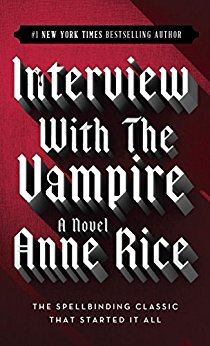
There is something about the inherent humanness of Louis that drew my attention from the beginning of this story. As he’s telling his tale in the interview to the young reporter, he’s conflicted about his life as a vampire, and I liked that about him. I liked that he hadn’t given himself over entirely to the animal-like vampire nature. Lestat is a fascinating character, but I’ve always liked Louis better. Louis strikes me as reluctant to entirely let go of being human, which is perhaps why he needed to tell his story. I think this book is where I first realized that a vampire might have a conscience. I don’t think it’s a coincidence that my own vampire, James Wentworth, is also conflicted about his vampire nature.
Dracula from, well, Dracula by Bram Stoker
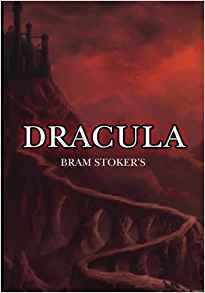
To be fair, Dracula himself is a meanie so in that respect I don’t like him all that much. But he’s so smooth, so suave, so enigmatic, and the way he sneaks around to accomplish his dastardly deeds is rather entrancing, to me and to the characters who share their blood (willingly or not) with the aristocratic vampire. I also loved Stoker’s storytelling, the way he tells the tale using newspaper clippings and diary entries. You can see how that influenced the Loving Husband Trilogy because I also use fictional primary sources to help tell the tale—in my case I used blog posts and television shows—in books one and two of the trilogy, Her Dear and Loving Husband and Her Loving Husband’s Curse.
Bill from True Blood and the Sookie Stackhouse novels
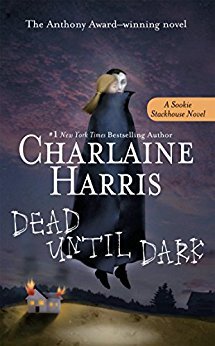
Since the Sookie Stackhouse stories originated in Charlaine Harris’ Southern Vampires series, I’m considering Bill a literary vampire. My Loving Husband Trilogy exists because of Bill (or Stephen Moyer, the actor who plays him, whichever comes first). There’s an episode early in the first season of True Blood (I think it’s episode four, but don’t quote me) where vampire Bill is giving a talk at Sookie’s grandmother’s church. Someone shows Bill a picture of his family from his human days before the American Civil War, and Bill becomes so emotional at the remembrance of them. That scene inspired Her Dear & Loving Husband. Here’s this vampire who has everything humans only dream of—extraordinary strength, immortal life—and yet he becomes so emotional at the sight of the ones he loved as a human. That’s where you see the connection between Bill and my vampire, James.
I did read Dead Until Dark, the first of the Sookie Stackhouse books, and I did enjoy it. Dead Until Dark is a quick, fun read told from Sookie’s point of view and you can see the influence the book had on True Blood. If you’re a fan of the show you should read the books.
Edward from Twilight
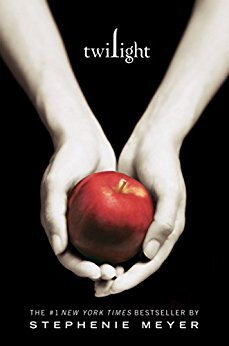
I’m compelled to give Edward a nod because if I hadn’t read the Twilight books I wouldn’t have ever given vampires a second thought. Twilight was the catalyst for my interest in vampires, which led me to write the Loving Husband Trilogy. It’s fair to say that without Edward, James Wentworth wouldn’t exist, the thought of which makes me very sad indeed. So thank you, Edward.
Matthew from A Discovery of Witches
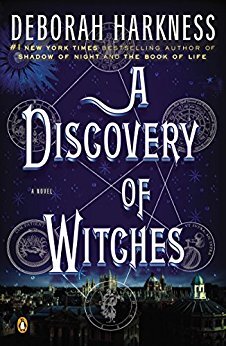
I love the witch aspect of A Discovery of Witches, and the fact that Matthew’s love interest, Diana, is related to Bridget Bishop, one of those accused and hanged for witchcraft in Salem in 1692. Of course, the Salem Witch Trials play a huge role in Her Dear and Loving Husband, and an even bigger role in the prequel, Down Salem Way, which I’m writing now. I thought it was an interesting twist that Bridget is a real witch in A Discovery of Witches. I loved reading this novel because I could see elements of Her Dear and Loving Husband in it, from the women’s connections to the Salem Witch Trials, to vampire professors, to spending a lot of time in a university library, to two unlikely beings falling in love despite the challenges. I’m glad I didn’t read this until after I wrote Her Dear & Loving Husband or else I would have worried about where I got my ideas from.
If you’re looking for some good vampire reads, here are my suggestions. The amazing thing about vampires is that people continue to be fascinated by them, so a new vampire book is something to be excited about. And most of these novels are part of a series, so there’s more than five books here for your reading pleasure.
June 22, 2022
Life on the Oregon Trail: Churning Butter

For those of you who have read The Duchess of Idaho, you know there’s a scene where Grace is both baffled and amused when her grandmother Annabelle teaches her how to churn butter. Annabelle has a feeling that Grace will need such a skill. It’s a skill Grace will be thankful to have when she’s homesteading in the 19th century without a grocery store in sight.
While researching food on the Oregon Trail, I learned that the women didn’t need to churn the cream to get butter during the 2000-mile journey. The wagons, bouncing over rugged terrain all the daylight hours, did the work for them. The women would hang buckets of cream inside their wagons and when they stopped for the night they had fresh butter.
As I was reading some recipes for making butter, I realized that the process didn’t look too hard so I thought I’d try it myself. As a wannabe food historian, this was right up my alley!
There are several ways to make butter. You can simply pour the cream into a mason jar and shake until the butter forms. You can use your stand mixer or even a hand mixer, pour in the cream, and let the mixer do its thing until the butter separates from the buttermilk.
Since I was doing this for research purposes (and, again, scratching that food historian’s itch), I wanted something reasonably close to the churns they would have used during the 19th century.
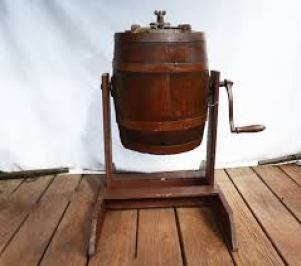
Butter churns came in many shapes and sizes during the 19th century. However, something like the barrel above wouldn’t work in my small apartment. I opted for something that worked in the same way but was easier to handle.
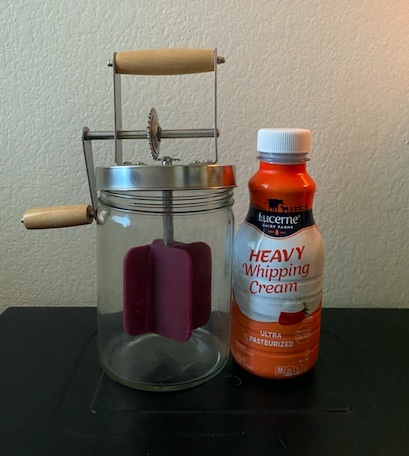
I found this handy-dandy mason jar with paddles that spin when you crank the side handle. The top handle makes it easier to hold onto while you’re working. I poured the cream into the jar and started churning. That’s it!
Well, that’s it except for the fact that it took me about 25 minutes of churning to make butter.
The cream will become butter more quickly if it’s not cold from the refrigerator, so leave the cream out at room temperature for a bit. Then, after a fair bit of churning, the cream will become whipped.
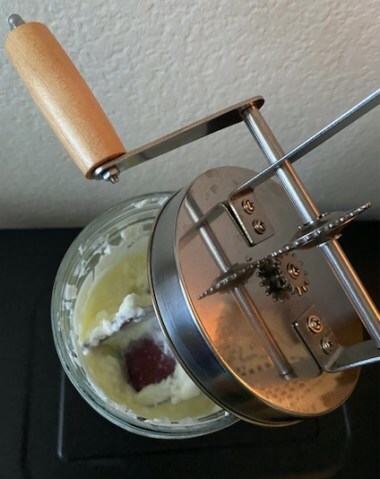
It’s a little hard to see here, but the cream has become whipped. You could stop at this point if you were in need of some whipped cream. For my homemade whipped cream recipe, I whip the cream until it’s nearly finished and then I add 1/4 teaspoon of vanilla extract and 1/2 teaspoon of powdered sugar. Then I whip the cream until it has the medium peaks I like. Trust me, the vanilla adds great flavor to whipped cream.
If you’re continuing until you get butter, keep on churning. Not long after the whipped cream stage, you’ll start to see the butter separating from the buttermilk.
After the butter has separated from the buttermilk, place a sieve over a bowl. Pour the butter into the sieve and allow the buttermilk to drain into the bowl. Keep that buttermilk! There are a lot of great ways you can use it. Remember, the people traveling the Oregon Trail and then homesteading when they reached their destination had to use everything. Nothing could go to waste.
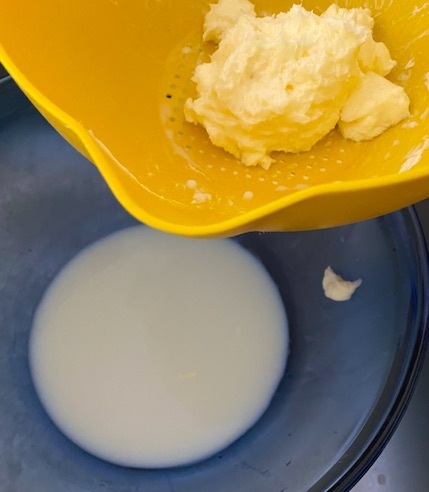
You want to make sure you get all of the buttermilk out of the butter, and there are a couple of ways you can do that. I’ve read that you can pour cold water over the butter and then you can squeeze the butter through a clean dish towel or a cheesecloth to make sure all of the liquid is out. I squeezed my butter through cheesecloth and then I used paddles to press out any remaining liquid. Using paddles with homemade butter is more of an old-fashioned way of doing it, which is why I wanted to try it.
Before I paddled the butter into the round shape I wanted, I added 1/4 teaspoon of salt because I like my butter lightly salted. You could also add herbs of your choosing at this stage.
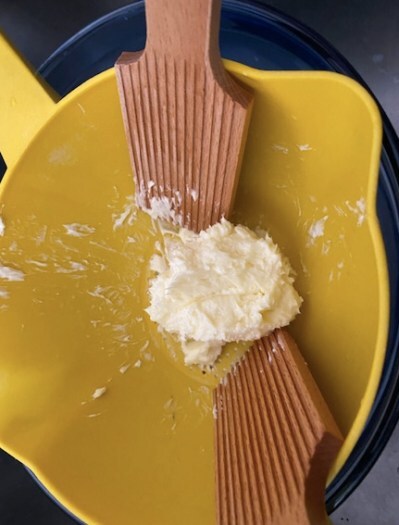
After the butter was ready, I stored it in the refrigerator in this handy-dandy butter container. There are many cute containers on the market, including butter molds with different scalloped and flowery shapes. I may try one with scalloped edges next time.
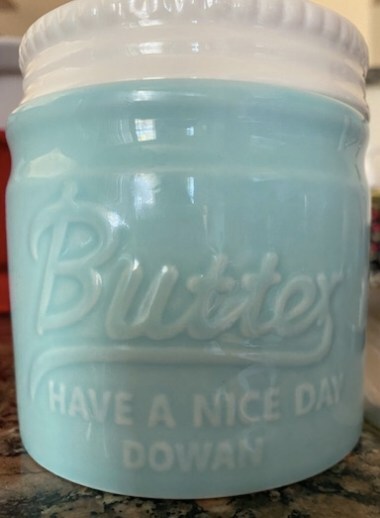
As I was churning away for nearly a half-hour, I realized how disconnected we’ve become from our food sources. Our ancestors had to work hard for every morsel they ate. Churning for 25 minutes was boring at first, but as I became mindful of what I was doing I felt a connection to everyone who has churned butter in the past since that was their only means of having butter. Churning butter came with a reminder to be thankful for everything I eat.
Whether you use a mason jar with paddles or your stand or hand mixer, making homemade butter can be a rewarding experience. It’s a simple way to experience fresh, homemade food.
I think I’m going to bake some strawberry scones. I need something to go with my fresh butter!
May 4, 2022
Must-Read Books About the Oregon Trail
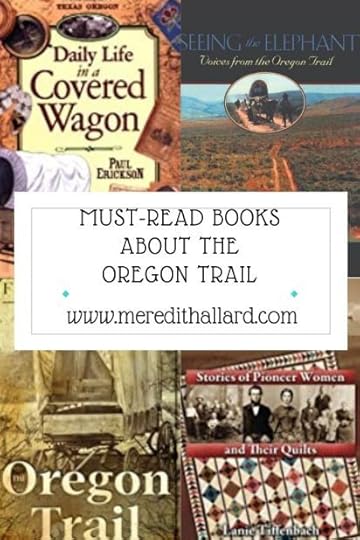
Before I begin, I want to start with a huge thank you to those of you who have read The Duchess of Idaho, a time travel love story set on the Oregon Trail. The Duchess of Idaho was #6 on the Time Travel Romance chart on Amazon and #4 on the Amazon Hot New Release chart in Time Travel Romance, which was unexpected but much appreciated.
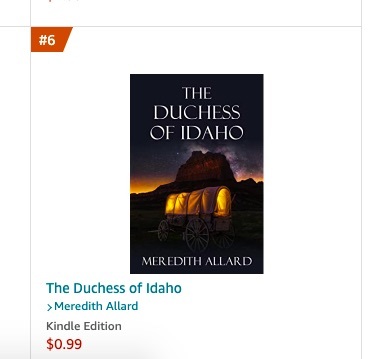 Not too shabby.
Not too shabby.One of the reasons I love writing historical fiction is because I get to learn about the various era of history I’m writing about. Of course, I would make my life a lot easier if I would concentrate on just one historical period, but what fun is that? Yes, I make more work for myself because I have to research a whole new era for each book I write, but I love the challenge of incorporating each new era into my fiction. And quite frankly, I’m a history nerd who loves learning new things.
I tend to choose historical eras for my fiction that I know nothing about. I’ve had to learn about Salem, Massachusetts during the witch trials, Biblical Jerusalem, the American women’s suffrage movement, and most recently I had to learn about life on the Oregon Trail in order to write The Duchess of Idaho. The 2000-mile journey west was treacherous, grueling, and so, so dangerous. Travelers didn’t know what they would face from day to day. Yes, there were lighter moments. There was song and dance and sometimes something to celebrate like a birth or a wedding. Lasting friendships were made. Learning about the Oregon Trail was difficult because there was so much devastation along the way, but it reminded me of the resilience of the human spirit, a lesson we’re in dire need of today.
Many books were indispensable in helping me bring this fascinating era in American history to life. One of my main goals when I’m writing historical fiction is to bring the history to life in such a way that readers become interested in learning more about the time period, so much so that they then seek out nonfiction accounts of the era.
Here are some of the books that helped me bring the Oregon Trail to life.
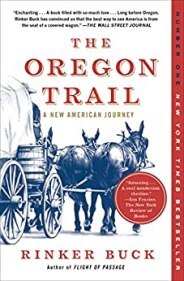
I’ve mentioned The Oregon Trail: A New American Journey by Rinker Buck before because I love it so much. It’s a wonderful account of how Buck and his brother follow the Oregon Trail in a white-covered wagon in modern-day America. The book is filled with interesting tidbits about the trail itself, but it’s also about family and how strangers can become instant friends.
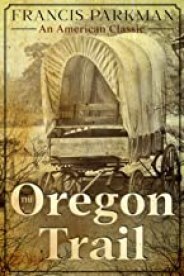
The Oregon Trail by Francis Parkman is a classic account of his time spent traveling west in the 1840s when he was 23. Many of his experiences are the same as those who traveled the Oregon Trail itself. Parkman was particularly obsessed with killing buffalo, as were many of the men traveling west. However, beware. This was written in the 19th century and it reads like it was written in the 19th century. Not long into the book I began thinking, okay, we don’t talk about people that way these days. If you’re sensitive to the insensitivities that those in the past had toward those who were different than themselves, you may want to skip this one. If you can do as I did and hold your nose when Parkman describes Native Americans and others, you can find some insightful information about traveling the plains and the pioneering spirit.
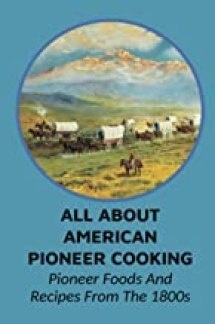
I’ve made no secret of the fact that I missed my calling in this life–I should have been a food historian. This book was a wonderful look at pioneer recipes. While the food wasn’t fancy on the trail and the recipes were fairly simple, the meals were good tasting and hearty enough to see the travelers across 2000 miles.
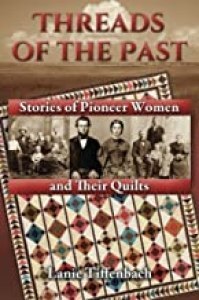
If you’ve read The Duchess of Idaho then you know that quilting has a role to play in the story. It’s a small role that will grow larger with the next book in the Grace trilogy, The Princess of Painted Skies. I love learning about the culture of the societies I write about, and quilting was an important part of the women’s culture during the pioneer and homesteading movement.
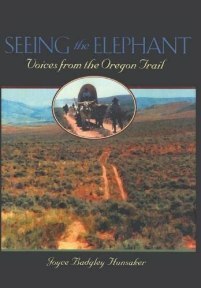
One of the cool things about studying the Oregon Trail is the sheer amount of primary sources from the era, mainly in the form of diaries and journals from women who traveled the trail. Yes, some men kept journals too, but primarily it was the women who documented the perilous 2000-mile trek. Seeing the Elephant: Voices From the Oregon Trail is a look at some of those voices. In fact, there are numerous compilations of journals and diaries from the era. Many are worth a look.
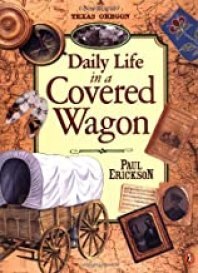
I’ve also made no secret of the fact that I love children’s books when I’m researching a historical era. If you’re inspired by photographs and pictures as I am, children’s books are a great way to discover some important information about the time period you’re researching. Nearly everything I learned about the white-covered prairie schooners came from Daily Life in a Covered Wagon by Paul Erickson.
This is just the short list. There are other books that helped me bring the Oregon Trail to life, including Covered Wagon Women: Diaries and Letters From the Western Trail Volumes 1-5 by Kenneth L. Holmes et al, Pioneer Women: The Lives of Women on the Frontier by Linda Peavy and Ursula Smith, and The Pioneers by David McCullough, which isn’t specifically about the Oregon Trail but gives wonderful insight into the pioneering spirit.
In case you’re wondering, I did play the Oregon Trail video game. For research purposes, of course.
April 5, 2022
Book News: The Duchess of Idaho is Now Available
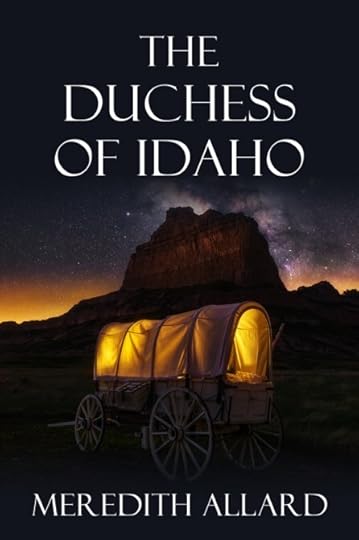 How about this gorgeous cover from Jenny Quinlan?
How about this gorgeous cover from Jenny Quinlan?The Duchess of Idaho, a time travel love story set on the Oregon Trail, is now available.
I came up with the title for The Duchess of Idaho about 20 years ago when I was living in Idaho. There’s a scene in DOI where Grace Wentworth, my main character, has just arrived in Idaho and she turns on the television to find the movie “Duchess of Idaho” playing on television. As a matter of fact, that scene was based on reality since that’s what happened to me. I moved to Nampa, Idaho in 2002, and the next day the movie “Duchess of Idaho” was on TV. I always thought that would make a great title for a book. Even though I only lived in Idaho for a year, during my time there I developed an interest in Lewis and Clark, the Westward Expansion, and the Oregon Trail, an interest that has stayed with me over the years. I had an idea that I wanted to write historical fiction based on the Oregon Trail, but it took some time to figure out what that story might be.
The time travel element of The Duchess of Idaho was inspired by Outlander since I had never given a second thought to time travel before reading the books and watching the TV show, that is except when I watched Doctor Who. At the moment, I have no intention of writing a story about a 2000-year old alien who travels through time in a blue box, although who knows? Wasn’t Outlander inspired by Doctor Who?
When I first came up with an idea to set a time travel love story on the Oregon Trail, I didn’t have any sense that the story would be connected in any way to my Loving Husband Series. Finally, one day it occurred to me…what if the time traveler was James and Sarah Wentworth’s daughter Grace? After all, her parents have been touched by magic. Why shouldn’t she have magic all her own? It took some time to figure out how to connect the dots between the world fans already knew and loved from the Loving Husband Series and my ideas for this new time travel story, but in time it came together. Here are some of my thoughts about writing my first time travel story.
For readers who might be interested in The Duchess of Idaho because of the time travel or the Oregon Trail background, never fear. The Duchess of Idaho was written as a stand-alone so you don’t need to read the other books in the series in order to follow the story. For fans who love the Loving Husband Series, The Duchess of Idaho will fit right into the world you know and love.
Like all of my books, The Duchess of Idaho will be released at 99 cents for the first month, so it will be 99 cents through April. Here are the current buy links:
The book will be available through Apple, BN, Google Play, and all online retailers in the coming days. The paperback edition will be available through Amazon by the end of the week and then through other online paperback retailers in the coming weeks. You’ll be able to find the websites in the Booksellers link above.
I had originally set up the preorders so that I could start to gather the buy links for some promotions I have coming up. I uploaded a dummy copy to Amazon to hold the slot, and I didn’t advertise the preorders or even the initial release of DOI because there were some snags with the final copy. I figured I’d start promoting the book when everything was all snazzy-like, but some lovely fans found the links and bought the book. Thank you! If you’re one of the readers who bought the dummy copy (that’s the copy that’s the dummy, not the readers), please let me know so I can replace it with the final edition. I’m eager to get that mistake fixed, so don’t be shy about emailing me at meredithallardauthor@gmail.com or through the Contact link above so I can send you the correct version.
Right now I’m taking a brief break from my own writing. I’ve been focused exclusively on The Duchess of Idaho since October, and it’s exhausting finishing a book, let me tell you. Still, it’s exhausting in a good way.
April will be spent getting the Spring edition of Copperfield Review Quarterly ready for its close-up. Then in May, it’s back to work bringing more of the Wentworths’ story to life with the next book in the series, And Shadows Will Fall, which takes place immediately after Her Loving Husband’s Return.
Whether you’re a Loving Husband fan or a casual reader interested in time travel or the Oregon Trail, let me know what you think of The Duchess of Idaho through the Contact link above. I love hearing from readers.
March 17, 2022
The Writer’s Life: Finding My Writing Flow
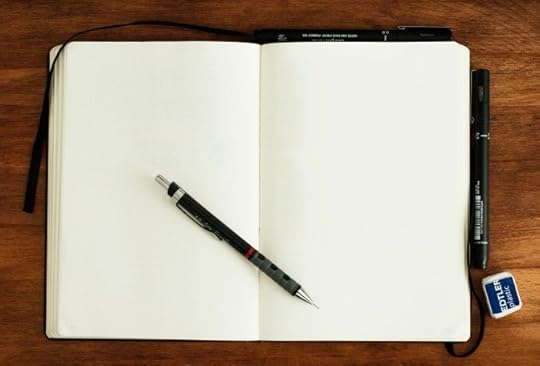 Mike Tinnion from Unsplash
Mike Tinnion from UnsplashWith all of the stresses in the world these days, there are times when I have to reach a bit to find my creativity. Some days, especially when writing is a struggle, I worry that I have used up every ounce of creativity I have, which of course is silly. As Maya Angelou said, “You can’t use up creativity. The more you use, the more you have.”
Here are some thoughts about what I learned about finding my writing flow. These are my lessons. Your lessons are your own to discover.
I Have a No-RoutineRoutine
This isn’t really a lesson, but that’s part of what we must become comfortable with when we choose to live a creative life. We can look at examples from others we admire, but in the end, we need to decide what works for us. We can read lists about the routines of famous writers like this one from Medium.com and this one from Brain Pickings. I love to see how these crazy-talented humans crafted routines that allowed them to create brilliant works of art.
Of course, my favorite is from my main man, Charles Dickens. Here’s what Medium.com said about Dickens’ unvaried writing routine:
Dickens’s working hours were invariable. His eldest sonrecalled that “no city clerk was ever more methodical or orderly than he; nohumdrum, monotonous, conventional task could ever have been discharged withmore punctuality or with more business-like regularity, than he gave to thework of his imagination and fancy.”
He rose at 7:00, had breakfast at 8:00, and was in hisstudy by 9:00. He stayed there until 2:00, taking a brief break for lunch withhis family, during which he often seemed to be in a trance, eating mechanicallyand barely speaking a word before hurrying back to his desk.
On an ordinary day he could complete about two thousandwords in this way, but during a flight of imagination he sometimes managedtwice that amount. Other days, however, he would hardly write anything;nevertheless, he stuck to his work hours without fail, doodling and staring outthe window to pass the time.
Promptly at 2:00, Dickens left his desk for a vigorousthree-hour walk through the countryside or the streets of London, continuing tothink of his story and, as he described it, “searching for some pictures Iwanted to build upon.” Returning home, his brother-in-law remembered, “helooked the personification of energy, which seemed to ooze from every pore asfrom some hidden reservoir.” Dickens’s nights, however, were relaxed: he dinedat 6:00, then spent the evening with family or friends before retiring atmidnight.
Just so you know, I’m not walking for three hours along the streets of Las Vegas in any season.
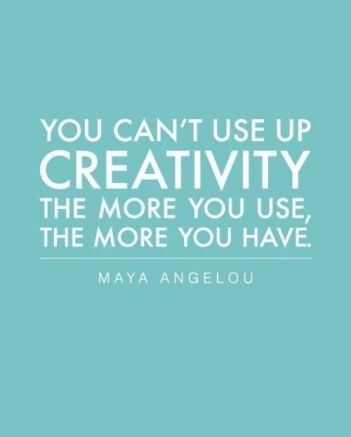
Unlike Dickens, I don’t always like to do the same thing at the same time each day. I get to work when I get to work, and that works for me. Anne Lamott says we should write at the same time every day because it tricks our brains into kicking into gear. Maya Angelou said something similar. If a routine works for you, then go for it (remember, this is about what works for you, not anyone else).
I have an inherent recalcitrance which means that I can’t be told what to do, even if I’m the one telling myself to do it. I had that problem a number of times this year. Someone would say to me “Do this” and my response was generally, “Yeah, that’s not gonna happen.” So I don’t do well with hours blocked out on a Google Calendar saying what time I’m supposed to work on my new novel or what time I’m supposed to edit a chapter. There were times when I’d create the events on the calendar and then never look at the calendar again since I didn’t care what it said. I’ll write when I feel like writing. So there Google Calendar!
Instead of plotting out my hours, I give myself one or two tasks per day. That’s it. When I get my tasks done, life is good. Two tasks a day might not sound like much, but it’s enough for me to make progress every day, and that’s what I’m looking for—progress.
Yesterday my two tasks were first, to finish sending out the author copies for the wonderful writers and poets who shared their work with The Copperfield Review’s second anthology of historical fiction, Made By History. My second task was to review three chapters of The Duchess of Idaho. The manuscript is in final edits so I’m in the fiddly stage where I spend 30 minutes adding and subtracting the same comma. I accomplished what I wished and though you can’t see me, I’m doing a happy dance. It’s a grandfather happy dance, but still, it’s a happy dance. All is well with my soul and now I have time to read, color in my new paisley design coloring book, brush Poppy (my cat), and watch the white-pink-gold desert sunsets we’re lucky enough to have here in Vegas.
I Use Notebooks
I mean the real kind with real paper that you write in with real pens. In Writing Down the Bones, Natalie Goldberg talks about getting goofy notebooks with cartoon characters and funny pictures on the covers. Her rationale is it’s harder to take yourself seriously when you’re writing in a Disney notebook. I’ve always loved that idea. Writing Down the Bones was originally published in the 1970s, long before technology invaded every aspect of our lives; for me, Goldberg’s message resonates even more strongly today.
Some time ago I realized that my thoughts were getting lost and I was losing track of ideas (currency for an artist). Which blog post did I want to share this week? What is the publicity schedule for my new book? Which interviews do I still need to respond to? I had a sense of what I needed to accomplish, but I had to find another way to keep track of everything.
Around the same time, I found some notebooks in a desk drawer (they were given to me as gifts). I finally started using them and it was like a whole new world opened up. I think my problem with notebooks (perfectionists will understand exactly what I’m talking about) is that I’m afraid of making mistakes and having to cross out things and leaving ugly scratches whereas in a digital file I can delete the mistakes without having to look at them again. But that was a good lesson for me—it’s okay to cross things out. I have one notebook for fiction and one for nonfiction writing ideas, one notebook that acts as a to-do list, which is where I write in my daily tasks, and one notebook that acts as a journal. In my to-do journal, I don’t add my daily tasks until after I finish working so I can see what I’ve accomplished and what still needs doing.
I saw some ideas for creating bullet journals on Pinterest so I tried using a bullet journal for my research on the Oregon Trail for The Duchess of Idaho. I’m pleased to say the experiment was a success. In April I’ll be writing a blog post explaining how it worked for those of you who are interested.
Finally…
I Now Have a Clearer Sense of What I Want to Accomplish
I have a clear vision for what I want to write. After DOI is published at the end of the month it’s right back to the Wentworths’ world with another Loving Husband story. I also have an idea for my next nonfiction book about creativity and storytelling.
Maybe this contradicts what I said earlier about not having a routine, but not really. I’m not talking about scheduling tasks into neat little hour blocks. I begin by I’m looking at the ideas for my next writing projects (written in my handy-dandy notebook, of course). Then I’m deciding what I want to write next, and then I schedule one or two tasks a day that allow me to reach that goal.
By having one or two specific tasks to accomplish each day, I can look back on my day (while brushing the cats and watching the sunset) and know I’m making progress. My work is getting done, and, for a creative person, that is the most important thing.
March 10, 2022
Writing Inspiration: Scene Sequels
 Photo by Glenn Carstens from Unsplash
Photo by Glenn Carstens from UnsplashI shared the concept of scene sequels in my book Painting the Past: A Guide for Writing Historical Fiction. Another novelist introduced me to scene sequels about 10 years ago and I’ve been using them ever since.
Yes, there are scene sequels in The Duchess of Idaho. I’ve found them very useful as I’m putting the finishing touches on the book. When I began writing DOI, I could see the internal and external conflicts for Grace Wentworth, my main character, so clearly in my mind, but I was having trouble articulating what I knew on the page. I used scene sequels as a way to slow down and allow my characters, and my readers, time to think through the various events that Grace encounters on the Oregon Trail.
The scene sequel takes place in four steps.
Step 1: Emotion
This is where the character is reacting to what has happened. In that moment when something happens, we feel it first. Before rationality, before logic, there is emotion.
Step 2: Thought
When the emotion of the moment fades away we begin to think. Sometimes logically. Sometimes not. But the intention is to make sense of what is happening. What does this really mean? What is the right thing to do? For me, the thought stage is where the character questions what has happened, what should have happened, what might happen. If I do A, will B, C, or Z result?
Step 3: Decision
After the thinking is done, what will you do? What will Grace do after she learns her parents’ secret? What will she do about her own secret? The decision is the moment when the character chooses one way or the other based on their thoughts about the event.
Step 4: Action
This is the result of the decision. Once the decision is made, then the character has to do something about it. Sometimes the decision is to sleep on it. Sometimes the decision is to deal with it later. But there should be some kind of culmination to the thinking and the decision.
The novelist who told me about scene sequels said she kept the formula on a sticky note on her computer for years to keep the steps fresh in her mind as she was writing. The formula is relatively simple, yet it allows us to understand the characters and their experiences on a deeper level. I think part of the reason scene sequels work so well is because they mimic our real-life process of dealing with whatever it is we have to deal with. First we react in an emotional way, then we think about it, then we decide what to do, and then we do it (or we decide to do nothing, which is also a decision).
A scene sequel isn’t the kind of thing you want to use at every little event, but whenever something momentous happens it’s helpful to slow down and allow your characters to feel, think, decide, and do. This will create a richer, fuller story for your readers.
March 3, 2022
Writing Inspiration: Allowing Room For Freedom When Writing Fiction
 Photo by Patrick Tomasso from Unsplash
Photo by Patrick Tomasso from UnsplashFor my first bit of news, on Tuesday, 3/1, I had the chance to participate in a Q&A for Rachel Thompson’s course Lit Mag Love, which helps writers who want to submit their work to literary journals. I had a wonderful time answering the questions. It’s a five-week guided course, and the next session starts on May 15. Interested? You can join Rachel’s waiting list here: https://rachelthompson.co/litmaglove/
For my second bit of news, for those of you who follow my blog to keep up with my latest book news, I’m pleased to announce that The Duchess of Idaho is finished and being polished up as we speak. The official publication date is 3/29/22. I can’t wait to share it with everyone.
For my third bit of news, I’ve finally updated my headshot. I’ve been wanting to do it for some time, but I wanted to wait until my natural (gray) hair had grown out enough that there wasn’t an obvious line of demarcation, which was about a year and a half (no joke). You can see it here.
Writing The Duchess of Idaho reminded me that there’s always a point while I’m writing a new novel where I’m reminded of Dorothy Parker’s great saying, “I hate writing but love having written.” There’s a lot going on in this little (okay, maybe not so little since it’s 100,000 words) book, and it took time for me to see how the pieces fit together. And there are a few pieces.
While The Duchess of Idaho isn’t a sequel to the Loving Husband Trilogy (it’s a stand-alone story that acts as the beginning of its own series) it still has many of the same characters from the Loving Husband Trilogy and it had to go along with the world that had already been established. The Duchess of Idaho is the first time I’ve written a time-travel story. I wrote a bit about that experience here. The Duchess of Idaho is an embedded narrative, a story within a story. I was writing about a new historical era for me, the Oregon Trail, so I had a lot of research to do. There’s a whole new cast of characters in The Duchess of Idaho. I actually had a list of character names/descriptions in the notepad on my computer so I could keep track of them all.When I began writing Her Dear & Loving Husband in 2009, it took some time for me to understand how to make the past and present storylines work in harmony. It wasn’t until I had the novel professionally critiqued that I understood the flow of the story. Luckily, once I figured out the plot writing the next two books in the trilogy, Her Loving Husband’s Curse and Her Loving Husband’s Return, came easily since they followed the same structure.
My next novel, That You Are Here, was a dream to write. That You Are Here is my only fully contemporary novel, and maybe that had something to do with the fact that writing it was struggle-free. I understood characters immediately and I saw the story play out like a movie, which meant all I had to do was take dictation. That book took me four months to write—crazy-quick, at least for me.
Again, with When It Rained at Hembry Castle there were challenges. I was back to where I was when I wrote Her Dear & Loving Husband—I had this whole new world to figure out. In the Loving Husband Trilogy, there are two points of view, from the two romantic leads, James and Sarah, and two time periods, the present and whichever historical period that novel is set.
When I began writing When It Rained at Hembry Castle, I thought I would use the same two-person point of view as I had in the Loving Husband Trilogy. After beating myself about the head trying to make it work, I realized that two points of view were not enough for this novel. I haven’t yet tried the head-hopping omniscient third-person point of view (one of these days I’ll try that one), but for Hembry I opened the field so that we get the point of view of more than just the two romantic leads (in this case, Edward and Daphne). I limited the POV to one character for each chapter so it isn’t difficult for readers to follow.
When I’m writing fiction, anything goes, which means sometimes it takes a while to figure out exactly what I need to do to bring each new story to life. The two-person point of view worked well for the Loving Husband Trilogy, so I assumed it would work for Hembry. It didn’t. There are too many characters in Hembry, and there’s too much going on for my two romantic leads to be everywhere. I needed to let some of the other characters have their moments in the sun. Once I allowed the characters the freedom to speak for themselves, the headaches started to go away and the novel started to resemble the story I wanted to write in the first place.
For The Duchess of Idaho, there are also several points of view throughout the story, though again I’ve kept it to one character’s point of view per chapter. Primarily, we have the point of view from Grace Wentworth, the main character, but we also hear from her parents, James and Sarah, and her dear friend Olivia Phillips. Like the Loving Husband Trilogy, there’s a past and present storyline, but it plays out differently in The Duchess of Idaho and I had to experiment a bit to see what that would look like in this world.
Once I understand the plot structure and the way the pieces fit together, that’s when I’m in the flow of writing and there’s nowhere else in the world I’d rather be. The first part of writing a novel has always been a struggle for me. That’s when I flap about like a fish out of water (or an asthmatic without an inhaler—speaking from experience), spending hours writing scenes that don’t make sense and have nothing to do with the story I want to tell. Often, as I continue through the writing process, those scenes will be deleted.
Every time I’m about to give up, though, I force myself to keep going because I’ve been at this long enough to know that the “shitty first draft” phase will pass and the story will reveal itself. How much hair I have in the end always remains to be seen, but bald or not bald, I know that I’ll figure out whatever it is that’s not working. This is something I need to relearn whenever I write a new novel, especially a novel set in a new world.
With every new novel I write, I need to remind myself that nothing is set in stone and I can experiment, play, and try new things until I find the winning combination. I could have imposed the two-person point of view on Hembry or Duchess because I’ve had success with it before. Instead, I allowed myself the freedom to play around until I discovered what did work for those stories.
After the heavy lifting is done, I can say that I love having written.
February 24, 2022
The Writer’s Life: Dare to Do Nothing
 Photo by Jonas Leupe from Unsplash
Photo by Jonas Leupe from UnsplashAs I’ve been seeking a simpler writer’s life, one of the things I keep hitting against like a brick wall is the pressure I put on myself to create a miles-long to-do list. There are so many things I want to write and edit and teach and create. As I look over those to-do lists, I’ve been feeling a bit overwhelmed by the sheer number of things I want to get done, so yesterday I shut down and did nothing.
Nothing. As in absolutely. Not one thing. I stayed in bed and caught up on two weeks worth of Coronation Street, an English soap opera for anyone who isn’t familiar with it. Normally, I’m not into soap operas (except Downton Abbey, which I’m pretty sure qualifies as a soap opera), but I like “Corrie” because it’s realistic (to the degree any soap opera can be), it has great characters, and it has a sense of humor. I’m always a sucker for a sense of humor. I made spaghetti and meatballs in my slow cooker, which is about as simple a meal as you can get, and I went to bed early.
I’ve had a lot on my plate lately, as so many of us have. My teaching job keeps me busy during the day. I’ve been running The Copperfield Review pretty much on my own for months now, and I’m currently getting the journal’s second anthology of historical fiction and poetry ready for its close-up next week. The Duchess of Idaho is also getting ready for its close up and I can finally say for certain that it will be released next month. I’ll give you an exact date in March.
DOI has been a challenge, let me tell you. There were a lot of new characters for me to get to know, and bringing the Oregon Trail to life provided its own challenges. I don’t think I realized how exhausting writing DOI was until now that I’m nearly done. I had written two complete drafts of DOI before I realized that the story is an embedded narrative, but that’s the way it goes for me. I’m a little slow sometimes. Once I figured it out then it was easier for me to fit the pieces of the puzzle together.
I don’t know where the idea that writing is easy or glamorous came from. I think readers see authors when they win awards or when they’re nicely dressed on a talk show and think that writers have the life. Or they know about Hemingway and think we drink all day. They don’t see us when we’re still in our pajamas at 3 pm or when we’re shuffling along with a bent back like we’re 100 years old because we’ve been sitting for hours. Writing is exhausting, and frustrating, but I don’t hear writers talk about that aspect of our job very much. Writers love to talk about how wonderful writing is, and it is, but it’s also damn hard.
The mental exhaustion that comes with storytelling can put a dampener on your energy, let me tell you, and I think yesterday it finally hit me. I needed a break–physically, mentally, and emotionally. But of course, as a creative person with the aforementioned mile-long to-do list, my first instinct was to be angry with myself for being so lazy.
I’ve suffered, like many of you, from what they call the Do Something Syndrome at the Farnam Street blog. It’s hard not to feel like I have to constantly be working at something—whether it’s writing, editing, marketing, whatever—or else I’m wasting my time. A while ago I started reading about stillness and how doing nothing can help to fill your creative well.
Here’s a great post from one of my favorite websites, Zen Habits, called The Number 1 Habit of Highly Creative People where the artists talk about stillness and doing nothing as a way to stay creative. There are a number of other articles out there on the same topic.
Doing nothing? It’s a hard concept for those of us who feel like we have to go, go, go. But on days like yesterday, I’ve learned to give myself a break.
And it helps. It really does. Today, as I write this, I finished editing the next three chapters of DOI. I’ve put the anthology into its final form in Vellum. I’ve started putting together the new marketing campaign, first for Her Dear & Loving Husband since that’s the first book in the Loving Husband Series, and then for The Duchess of Idaho, which will be the fifth book in the series.
I’ve written before about “productivity” and my concerns about how we push ourselves so much sometimes that we lose touch with our creativity. Sometimes, a day to sit back and do nothing is essential. Sometimes, making yourself a simple homecooked meal and catching up on TV shows is the best thing you can do for yourself as a creative person. Allowing yourself time to breathe, to think, to simply exist, can be the best present you can give yourself.
Slow living, authentic living, is as important for writers as it is for anyone else. We need energy to attack all the things we want to accomplish as creative people. Daring to live more slowly, even daring to do nothing when the time is right, can help us find that energy.
By the way, if you’re looking for a delicious, simple meal for the slow cooker, here’s my spaghetti and meatballs recipe.
Ingredients:
Your favorite spaghetti
3 jars of your favorite pasta sauce
1 package of meatballs (vegetarian or meat)
Mozarella or another favorite kind of cheese
Empty one jar of spaghetti sauce into the slow cookerFill the jar with water and add that to the slow cookerAdd the spaghettiEmpty the second jar of spaghetti sauce into the slow cookerFill the second jar with water and add that to the slow cooker tooAdd the meatballsCook on high for 2-3 hoursCheck the spaghetti while it’s cooking and stir frequently. If the pasta is soaking up too much of the liquid and seems to be drying out, add the third jar of sauce and more water. The pasta needs a lot of liquid to cook. As soon as the pasta has softened to your taste (about 2-3 hours), add cheese and enjoy.That’s it! It takes about five minutes of prep and cooks itself. What else could you ask for?
February 17, 2022
Writing Inspiration: What Coloring Books Can Teach You About Writing
 This is definitely one of my better pieces, maybe because I love peacocks.
This is definitely one of my better pieces, maybe because I love peacocks.I loved coloring when I was a kid, and as it happens I still love to color. I consider myself a wannabe crafter. I used to dabble in painting with acrylics, and while coloring in a coloring book isn’t actually crafting or creating an original work of art, it still allows me to play with colors.
I’ve discovered a meditative quality to coloring since the coloring itself is all I’m thinking about while I’m engaged in the activity–choosing which picture to fill in, choosing which supplies I’ll use (maybe crayons or colored pencils or gel pens), and deciding on my color palette. I’m not worried about all the work I have to do for my own writing, for The Copperfield Review, for my teaching jobs, or anything else. The more I have on my to-do list and the more stressed out I feel, the more I appreciate the simplicity of sitting down with some crayons and coloring in some pictures.
A few years ago, when coloring for adults exploded in popularity, suddenly there were countless articles about the right way to color. The explosion of experts is similar to what happened with writing and indie publishing about a decade ago—suddenly there were all these experts shouting about the right way to write, the right way to publish, the right way to market. The same thing happened to coloring. Something that should be relaxing and fun became stressful as I tried to keep up with the right way to do things. There’s nothing like an expert to take the fun out of something.
I had the realization (while coloring, of course) that my attitude toward coloring was the same as my attitude toward writing. I had to decide for myself how I wanted to color, just like I had to decide for myself how I wanted to write.
First of all, use the colors you want to use.
The experts in coloring will tell you to choose your palette first—use a color wheel to help you determine which colors to use. They’ll tell you which colors go with each other, and if you use that other color combination, look out! The Crayola Police will hunt you down. Hey, they say, that’s how painters do it, so that’s how coloring people should do it too!
And then I realized that I could use any color combination I want, just as I can write my stories however I want. I don’t like choosing my colors ahead of time. I like to choose my colors one by one as I’m coloring in the picture. Sometimes I have an overall idea of the color scheme I want to use, sometimes I don’t. Sometimes I’m happy with how the pictures turn out, sometimes I’m not. When I’m writing, I have an overall idea of how I want the story to turn out, but I’ve also learned to get out of my own way and allow the story to find its own path. If I prefer choosing my colors as I go as opposed to choosing them first then I can do that. If I prefer letting my stories find their own way, I can do that too.
Then, stop comparing yourself to others.
There are some amazing coloring websites out there where the artists post their finished pages. Some of those colored pages are indeed museum-ready. They’re absolutely beautiful with shading and light and the way the colors blend together. My pictures don’t look like that (as you’ll see from the examples in this post). I love playing with colors, and some color combinations I try I like, some I don’t like as much, but so what? I wouldn’t know what I liked unless I allowed myself the freedom to experiment.
I have no desire to become a professional artist. Making myself crazy trying to make my pictures look like some of these artists’ pictures doesn’t work for me. I don’t have a lot of time to color because I’m so busy with other tasks, so when I do have time to play with my crayons I don’t want to spend my time being stressed because my picture doesn’t look good enough compared to what other people can do. Where’s the fun in that?
Writers often have severe cases of compare-itis. We’re always looking to see which writers are selling more books, getting better reviews, or winning more awards than we are. We have to remind ourselves that we’re not in competition with other writers. This isn’t a race. Our careers as writers are just as unique as we are as people. No two writing careers are alike. We need to remember to focus on ourselves and helping our own careers move forward. Like runners, if we keep looking back to see who might overtake us we’ll lose steam and slow down.
Finally, outline if you want to, and it’s okay to color outside the lines.
 You can see that I outlined the leaves in dark green and filled them in with light green.
You can see that I outlined the leaves in dark green and filled them in with light green.When I was reading posts of coloring tips, a number of the experts said not to outline your drawing. Apparently, with outlining you’re not going to have a realistic-looking product and that’s not how the professionals do it. Oh well. I’ve always liked to outline my coloring pictures. Even when I was a kid I’d outline the shapes with whatever crayon I was using. A lot of times, I’ll outline with a darker color and fill in the shape with a lighter color (as evidenced in the picture above), and I like the way that looks. Is it wrong? Not to me. It’s my coloring page and I’m going to do it the way I want to. It’s the same with coloring outside the lines. I like it when my coloring pencils or crayons end up outside the line because then when I’m filling in the next color they blend a bit. How maddening, to feel like your coloring page is all wrong if your hand slipped and some color ended up on the other side of the line.
A few years ago I went out to dinner with a friend who was about to retire from her teaching career. I told her about coloring and how many hours of enjoyment it brought me. I even bought her some colored pencils and coloring books as a retirement present. A few months later I asked her how she liked her coloring books. She told me that she was afraid to try them because she could never stop herself from coloring outside the lines. I tried to explain that this was her own book, for her own enjoyment. No one was going to grade her and if she wanted to draw big, squiggly lines who’s going to know? To this day I don’t think she ever tried coloring because she was afraid of some imaginary giant finger in her brain shaking “NO!” if her pencil dared to stray over the line. So often, the limitations we set upon ourselves are far harsher than anything the outside world could set on us.
There are also a lot of posts out there for writers about the right way to do things. Write in these genres if you want to make money. Publish this many books a year. Set your books at these prices. Grow your social media presence and build your author platform. But what if you don’t want to limit your writing to certain genres, or what if you have another life outside of writing and publishing as I do, a life that you don’t want to give up? Does that mean that you won’t have any career as a writer? Not at all. It means that you get to decide what kind of career you’re going to have.
Here are my own tips for coloring and writing.
Color the picture that sings to you. You don’t have to start at the beginning of the book. You decide where to start. If you don’t love the picture, coloring it will be a chore and you’ll never finish it. The same goes for writing. Write something you’re excited to get back to. If you’re not excited about it, it’s going to be hard to convince readers your writing is worth their time.Choose your own colors. You can use a color wheel to examine which colors go together, or you can choose whatever you want to choose because you want to choose it. You can choose them ahead of time, or you can choose them in the moment, whichever feels right to you. For writing, you get to decide how you use language. You have the final say in how you’ll string phrases together. You may not like the way some of it turns out. That’s okay. You tried it, you didn’t like it, so try again until you find something you do like.Don’t compare your pictures (or your writing) to anyone else. Find your own style. That’s the only way you’ll find true enjoyment as a creative person. Coloring (and writing) should be fun. Listen to your favorite music. Turn off your electronic devices and other distractions. Make your coloring (and your writing) time special so you’re looking forward to getting back to it.You can let the experts tell you what to do and how to do it, or you can find your own way. Whether I’m coloring or writing, I find it a lot more fulfilling to find my own way.
February 10, 2022
Writing Inspiration: The Spark of Creativity

On Saturday, February 5, 2022, I was invited to speak at The History Quill’s convention for writers of historical fiction. My topic was writing and publishing short historical fiction. One of the ideas I mentioned in passing since I only had an hour was about the spark of creativity. I talk about this in my book Painting the Past: A Guide for Writing Historical Fiction, but I thought I’d touch on it here for those of you who are interested.
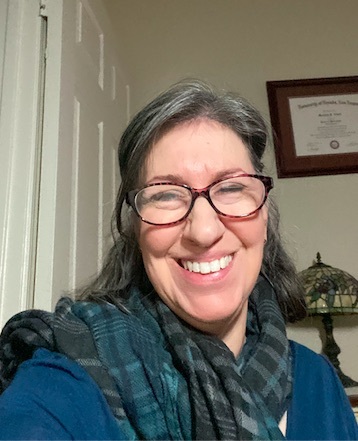 Right before my session at The History Quill’s convention.
Right before my session at The History Quill’s convention. Do you know what I mean by the spark? It’s that germ of creativity, that burst of luminosity that prompts us to say, “I wonder…” after which we spend hours pursuing answers to our questions. The spark of creativity helps us feel or think differently than we did before.
That spark, that moment of wonder, can become a poem, a song, a painting, a film, a dance. It could become a short story or a novel. Sometimes the spark is as fleeting as a lighting flash across a moonless sky and it doesn’t become anything other than a passing curiosity. That’s okay. Not every spark is destined to become a creative endeavor.
How do you know if a spark is merely a passing fancy or something more? If an idea is gnawing at you from the inside out, distracting you to the point where you’re unable to think about anything else, then that is probably a spark that will lead to a project of some kind. If the idea tickles your fancy for a day or two but then you aren’t interested enough to look into it, then it’s simply an idea, maybe even a good idea, but an idea that’s not for you. If the question “I wonder…” doesn’t inspire more questions, which inspire more questions, then leave this spark aside and find the one that keeps you up at night.
For those of us who are drawn to write historical fiction, that “I wonder…” is likely to be motivated by a moment from the past. Creative sparks can come from anywhere—a book you read, a television show, a film, a play, an article in a newspaper, a blog post, a conversation with a friend, a family memory that has been passed down the generations. And creative sparks often come when you least expect them. One of the great joys of writing historical fiction is that your spark can come from any moment throughout human history. Historical writers can relax knowing there is a vast amount of material to inspire us.
Perhaps your spark will be inspired by characters—the people who will inhabit your story. Your characters can be fictional or real-life historical personalities. You can choose to create fictional characters who inhabit historical settings such as the Victorian Era or you can focus your writing on real-life people such as Queen Victoria.
Do you wonder what Marie Antoinette’s life was like, particularly in her final days? Do you wonder what Benjamin Franklin was thinking while he snoozed in his chair at the Constitutional Convention? Do you have a character of your own invention that you imagine wandering the streets of London during the Great Fire of 1666?
Perhaps your spark of creativity will be inspired by a long-held interest in a specific period. If you’re intrigued by Vikings, by the U.S. during the Vietnam War, by cave paintings in France, begin there.
If you’re writing a novel set around the French Revolution but don’t find the details or the people of the French Revolution particularly interesting, then your novel is already in trouble since you’re going to avoid the research with every Excuse you can name. No one wants to study something that bores them. For all the projects I’ve completed, many more lay by the wayside. If I wasn’t compelled by what I was writing, then I dropped it. If I can’t convince myself that the project is worth writing, how can I convince a reader that it’s worth reading? If you’re not interested in your subject, you won’t write your novel no matter how much you love the idea of writing historical fiction.
If you’re fascinated by the French Revolution, well, that’s a different story. Then you’ll look forward to digging through the archives, flipping through the bibliographies, and skimming for important details as you search for the next big clue that will help you fit the pieces of your story puzzle together.
While we’re on the subject of sparks of creativity, it might happen that an idea for a historical story occurs to you out of the blue—not based on any previous interest or knowledge but rather some random thought that pops into your mind. You know how those pesky ideas can do that. Then, as a result of the reading that grows out of your curiosity, you develop an interest in the era.
I have this odd habit of coming up with stories set during historical periods I know little or nothing about. In 2009, I came up with an idea for a story set during the Salem Witch Trials in 1692. Though I didn’t have any interest in the era before, I became fascinated through my research.
How did I come up with a story idea for an era I wasn’t familiar with? It happened when I decided on the setting. As I considered where my paranormal love story would take place, I deliberately stayed away from the Pacific Northwest and Louisiana since other well-known literary vampires live there. Transylvania was a no-go. I thought of my hometown Los Angeles or where I live now in Las Vegas, but neither felt right. Too bright, I think. I decided that if I wasn’t going northwest then how about northeast? I pulled up a map of the U.S., looked at the northeast, saw Massachusetts, and there in a little dot near Boston was Salem. That was it. Once I settled on Salem, I knew I had to incorporate the witch hunts into my story.
When I was writing the second book in the Loving Husband Series, I wanted to keep everything readers love about the first book while challenging my characters and myself. I had already used the Salem Witch Trials as the historical background in Book One, and I needed something new to introduce in the sequel. I decided that the Trail of Tears would make a strong historical background for Book Two since the events paralleled the story I wanted to tell.
What did I do with this spark of creativity? I spent most of that summer researching the Trail of Tears, again a time I knew little about. In this case, my spark of creativity gave me an important lens through which to understand the story I wanted to tell.
My creativity has been sparked by various historical periods. I’ve written about the American Civil War, World War I, the Women’s Suffrage Movement, Biblical Jerusalem, the Salem Witch Trials, the Trail of Tears, the Japanese-American internments during World War II, and Victorian England. My next historical fiction project focuses on pioneers on the Oregon Trail.
Jump around much? As a matter of fact, I do.
I think my personality causes me to jump from era to era. I’m easily bored, and once I do something I’m ready to move to a new challenge. What’s next? is a frequent question of mine. Yes, I create more work for myself because I have to research a different era for each novel I write, but since I love learning about history I don’t mind. Some historical novelists love to write about one specific time period—Ancient Egypt, the American Revolution, World War II. If you’re inspired by one historical era, then by all means stick with it. For myself, I’m happy to take my sparks of creativity where I find them. Although I’m taking on extra research, I’m writing the stories that are in my heart to write, which may be one of the biggest gifts you can give yourself as a writer—and one of the biggest gifts you can give your readers because you’re sharing your genuine interests with them.
While I was at The History Quill’s convention, one writer asked me when was the best time period to set a historical short story. My answer was whatever time period you’re most interested in. If you’re interested in that historical era, readers will sense it and they’ll be more inclined to join you there.
And if the spark turns out to be a fizzle? You have permission to leave behind a project that doesn’t suit you. If an idea doesn’t work for whatever reason, try another until you find the right fit. Still, don’t use this as an excuse to avoid writing. If you want to write historical fiction, you’ll need to settle on a project and see it through.



